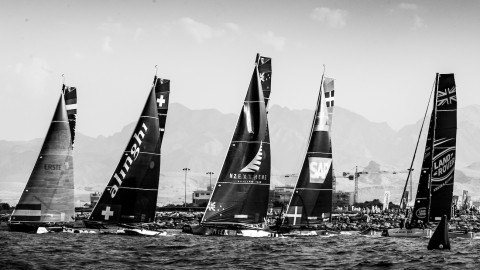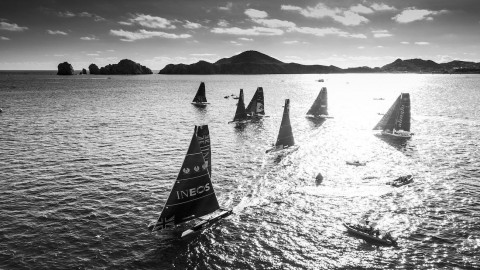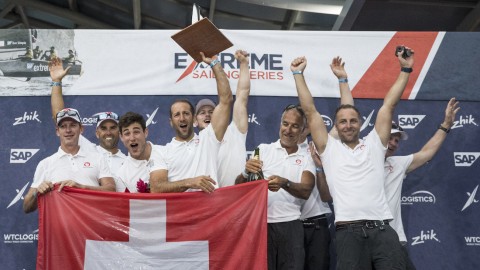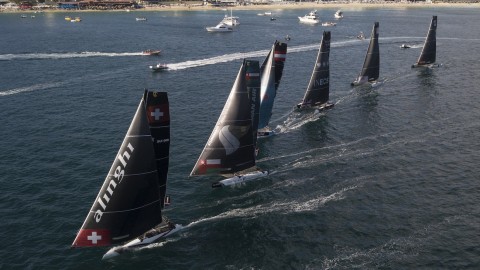SAP Sailing Analytics helping Extreme Sailing Series™ push boundaries of sport
The Extreme Sailing Series™ isn't just at the forefront of its sport; it is also a leader in developing new technologies and pushing the boundaries of what's possible on the water.
Wednesday 9th November 2016

The Extreme Sailing Series™ isn’t just at the forefront of its sport; it is also a leader in developing new technologies and pushing the boundaries of what’s possible on the water.
Thanks to its partnership with German tech giant SAP, the Extreme Sailing Series allows fans to immerse themselves in the action more than ever before while also providing teams with valuable data to help them sail faster.
SAP has been an official technical partner of the Extreme Sailing Series since 2012 offering real-time 3D visualisations of the racing, live leader boards and vital post-race statistics like average and top speeds, distance sailed and number of manoeuvres performed.
But SAP’s insights into the superfast Stadium Racing of the Extreme Sailing Series have become even more important to spectators and sailors alike this season with the move to ‘flying’ GC32 catamarans that lift clear of the water on special hydrofoils.
To help teams get to grips with the new foiling boats, hyper-sensitive sensors have been fitted to the fleet of GC32s that tell sailors how high above the water they are, plus crucial information about the angle of the boat.
Thousands of readings are then transmitted from the boats to SAP’s data hub where clever algorithms turn them into understandable information. Never before have professional sailors been presented with so many figures with which to fine-tune their performance, and help them put on a thrilling show for fans around the world.
“The whole strategy for us is to make sailing more transparent and understandable for fans and sailors,” explained Milan Černý, Technology & Innovation Lead, Global Sponsorships at SAP. “If you’re a sailor or a coach you want to understand about your performance. Historically performances were improved by analysing sessions on the water but now with technology you can compare that to hard facts.
“You get tracking, wind readings, the course you sailed thanks to GPS, and now boats are foiling we’re adding another dimension to it. All of a sudden the boats can fly and we want to understand what makes them fly, and what the ideal way to sail these boats is.
“We try to collaborate with the sailing teams as closely as possible because we want their feedback – they’re the experts so they can tell us what the most relevant things are. They told us the most important things to know are whether it is worth attempting to foil, and what the best angles are to sail once up.
“Foiling is also new to the Extreme Sailing Series audience so we want to educate them too and tell them what’s so special about foiling. Our technology can do that.”
While the concept of foiling is relatively new to sailing, Černý says it is just the beginning of a journey that will see the sport at the forefront of technological development.
“This is a journey we are on with the Extreme Sailing Series to push the boundaries of our sport,” he said. “GPS tracking has been around for a while but now we’re putting it into context, measuring manoeuvres and then taking that data and supplying it to the fleet and the public. That’s the innovation, and foiling is just another step in that journey.
“F1 cars have around 120 sensors on them. The Extreme Sailing Series fleet is not quite at that level yet but we’re getting there. There are so many more things we could measure on these boats – weight distribution, heart rate monitoring, sail trim and so on – to make racing even more exciting for the sailors and fans.
“We are driving this innovation with the Series – it’s our goal to make this technology happen.”




